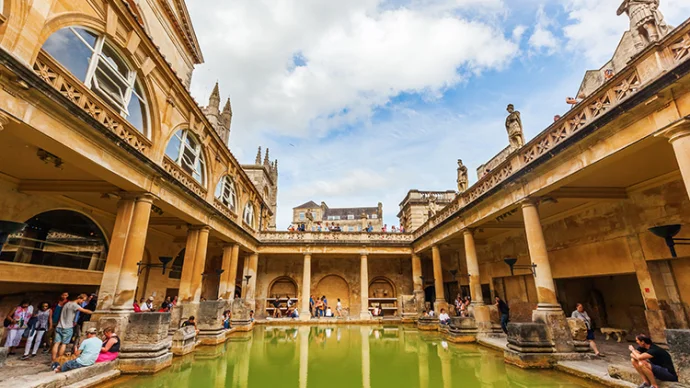
About Caernarfon Castle
Caernarfon Castle is a stunning medieval stronghold in Wales built by Edward I in the 13th century. Today a UNESCO World Heritage Site, Caernarfon welcomes thousands of visitors a year to explore its fascinating history and awe-inspiring architecture.
Caernarfon Castle history
Construction of Caernarfon Castle begun following Edward I’s conquer of Wales in 1283, and was at last completed by 1330. To secure his hold on the rebellious country, the king encircled it with an ‘iron ring’ of castles which included Caenarfon, Conwy, Harlech, and Beaumaris. Grand and imposing, Caernarfon Castle was an impressive mix of fortress, royal home and political seat, with features echoing that of imperial Rome and Arthurian legend.
Caernarfon Castle was of great significance to the king, and in 1284 he visited with the heavily pregnant Queen Eleanor, likely to ensure his son would be born inside its walls. When the prince arrived he was named Edward of Caernarfon, and became the first English Prince of Wales in 1301, later becoming Edward II.
Over its lifespan Caernarfon bore witness to much conflict, including its brief capture in 1294 during a Welsh revolt led by Madog ap Llewelyn, in which some of its walls were destroyed as Wales was set alight. In 1403 and 1404, another rebellion led by Owain Glyn Dwr threatened the castle – this time with less success – before tensions between England and Wales eased somewhat during the Tudor era, the eminent family being of Welsh descent.
In more recent history, Caernarfon was again at the centre of royal ceremony. In 1969, the investiture of Prince Charles as the Prince of Wales took place within its shell, in which he gave a speech partly in Welsh to honour the ancient office of which he inherited.
Caernarfon Castle today
Today, Caernarfon is managed by Cadw and remains exceptionally intact, with visitors able to explore its vast walls and many towers. Entering through the atmospheric King’s Gate, its double towers and overlooking statue of Edward I may be admired, while inside the castle’s interior transports guests back in time to medieval Wales. A trip up its winding stone staircases to its battlements also allows for fantastic views over the town and River Seiont.
The 10-sided Eagle Tower, where Edward I and Queen Eleanor’s apartments once lay, today houses an interactive history of the castle, while inside the Queen’s Tower, the Museum of the Royal Welsh Fusiliers is held, giving the 300-year history of the important Welsh regiment. Inside the Chamberlin Tower, a collection of paraphernalia from Prince Charles’ investiture may also be found, detailing some of the castle’s more recent history.
Getting to Caernarfon Castle
Caernarfon Castle is located on Wales’ northwest coast, just off the A487 and there is parking directly next to the site. Its nearest train station is Bangor, 10 miles away, from which the 5/5A/5B bus service may be taken, which stops 200m from the site at Caernarfon Penllyn.
Featured In

Castles in Wales
Discover Wales' rugged and scenic castles, including Beaumaris, Harlech Castle, and more.

Caernarfonshire Historic Sites
From one of the most significant surviving structures of the middle ages to a modern stone circle, there are a number of fascinating historic sites to discover in Gwynedd.

Historic Sites Associated with Edward I
Follow in the footsteps of King Edward I, from Denbigh Castle to Scone Palace and more.

10 of the Best UK Historic Sites
Discover 10 of the best Historic Sites in the United Kingdom, from the Roman Baths in Bath to Edinburgh Castle and more.




















